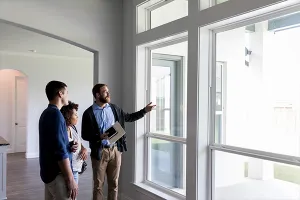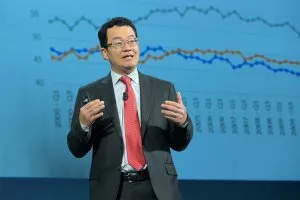Apartment demand ― measured by the net change in occupancy (absorption) ― has climbed down to its normal level since the fourth quarter of 2021 after spiking in the first three quarters of 2021. However, even if net absorption is normalizing, absorption (demand) is still outpacing deliveries (supply) across all classes of apartments. Higher mortgage rates and sustained price acceleration in 2022 will also push up rental demand. The rental vacancy rate remains tight especially for Class B and C units. Amid elevated inflation, rents will continue to rise strongly in 2022 although at below double-digit pace.
Apartment rental trends
According to the U.S. Census Bureau, the rental vacancy rate stood at 5.6% in 2021 Q4, which will be the lowest rate in nearly 40 years, since 1984 Q1. Proprietary data from CoStar, which tracks just multifamily units, estimates the vacancy rate at 4.5%. With a low vacancy rate, asking rents have increased at an average of 11.2% year-over-year over the past 12 months, the highest pace since CoStar began tracking the data in 2011.
In the first three months as of February 9 and during the fourth quarter of 2021, quarterly or 3-month net absorption totaled just nearly 70 million units. This is just one-third of the average quarterly net absorption of about 210,000 units during the first three quarters of 2021, but it is trending towards a normal level. In 2019, prior to the pandemic, the average quarterly absorption was around 82,000. With demand normalizing, the vacancy rate has slightly increased to 5%.
However, even if net absorption is normalizing, absorption (demand) is still outpacing deliveries (supply) across all classes of apartments. In 2021, absorption nearly doubled the pace of deliveries, with 703,924 net apartment units absorbed, but only 378,683 delivered to the market.
Ongoing construction is split between Class B and Class A even if Class A has the highest vacancy rate of 7.1%. Class A asking rent is $2,107 so it is less affordable. Class B apartments, which are more affordable than Class A with an asking rent of $1,534, have a vacancy rate of 4.6%. Class C apartments, which are the most affordable, with a market asking rent of $1,230 have the lowest rental vacancy rate of 3.7%. The low rental vacancy rates for Class B and C indicates a strong need for the construction of more affordable apartments.
Factors that underpinned the demand for rental units in 2021 are easing in 2022
What might explain the surge in apartment absorption in 2021? One factor is the turnaround in net household formation that has created a demand for both owner-occupied and rental housing. In 2021 (as of March), there was a net household formation of 1.48 million households, a reversal of the decline in number of households in 2020, at 128,000 households, according to the U.S. Census Bureau’s Current Population Survey.
By age group, there were 987,000 net new households headed by persons 30–44 years old, of which 315,000 were headed by persons 30–34 years old.
By educational group, the highest change in the level of net household formation relative to the 2020 level were households headed by persons without a high school degree: In 2021, there were 576,000 net new households, which reversed the 735,000 decline in households in 2020. However, households headed by persons with a bachelor’s degree had accounted for the largest number of net new households, at 1.29 million. Strong job recovery likely encouraged the formation of households that drove the demand for both owner-occupied and rental housing.
In 2022, the recovery in employment is likely to slow, given the current demand and supply conditions in the labor market and the slower economic growth that is expected in a rising interest rate environment. As of January 2021, there are just 3.3 million jobs to recover out of the 22.4 million jobs lost in March-April 2020. The decline in labor force participation is likely to constrain the filling up of open jobs. As of January 2021, there are nearly 3 million more job openings (8.9 million) than job seekers (6.5 million), with 4.4 million people no longer in the labor force.
The surge in apartment absorption in 2021 could also be associated with workers returning to work, which is indicated by the decline in number of employed persons who worked from home or teleworked. From December 2020 through December 2021, the number of workers who worked from home fell by about half, from 35.5 million to 17.4 million. Most of the workers who teleworked were in management, professional, and office support (‘’office-using jobs”), totaling 15.4 million, or 89% of total workers who teleworked.
Apartment outlook
Absorption is likely to trend at normal levels, but with deliveries and construction still lagging absorption, rental vacancy rates will remain tight. With tight rental vacancy rates, rents will continue to rise strongly in 2022, although at below the double-digit pace at 8% to 10%, especially because inflation is expected to still hover at 5% to 6% in 2022. Higher interest rates in 2022 will further lead to a demand for more apartment units because higher mortgage rates will make a home purchase less affordable for nearly 1.8 million renter households headed by 25-54 years old. There is a strong demand for affordable apartments (Class B/C), indicating opportunity for more construction to meet the needs of renter households who can afford at this price range.









